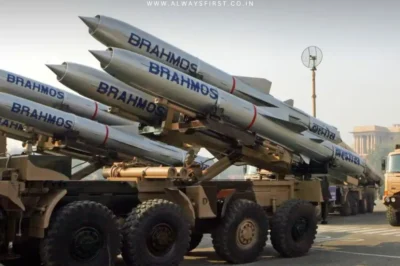Key Takeaways:
✔ Global Demand Surge: Over 14 countries, including Vietnam, Brazil, and UAE, are in talks to acquire BrahMos missiles post-Operation Sindoor.
✔ Enhanced Capabilities: With speeds of Mach 3 and a range of up to 800 km, BrahMos is among the world’s fastest precision strike missiles.
✔ Local Manufacturing Boost: Lucknow’s new BrahMos integration facility and titanium production mark India’s push for defence self-reliance.
BrahMos Missile Emerges as Global Defence Hot Commodity
The BrahMos supersonic cruise missile, a joint venture between India and Russia, has become the centrepiece of international defence discussions following its pivotal role in Operation Sindoor—India’s decisive military response to the Pahalgam terror attack in April. Defence Minister Rajnath Singh, addressing a public gathering in Lucknow, emphasized how India’s defence prowess is now drawing worldwide interest.
“Through Operation Sindoor, India sent a clear message—we will respond firmly to terrorism,” Singh declared. “Now, the world is taking note of our capabilities.”
Who’s Lining Up to Buy?
The missile’s combat effectiveness has triggered a buying spree across continents. According to reports, Vietnam, Brazil, and the UAE lead a growing list of over 14 nations in advanced negotiations.
- The Philippines became the first international buyer, securing a $375 million deal in 2022 for coastal defence batteries. Two of three ordered units have already been delivered.
- Indonesia is in talks for a $450 million advanced variant, potentially arming its Su-30MKM jets and warships.
- Vietnam is reportedly finalizing a massive $700 million package for Army and Navy deployments.
- Middle Eastern & Latin American Interest: Egypt, Saudi Arabia, Brazil, and Argentina are exploring naval and land-based variants.
Why BrahMos Stands Out
Since its maiden test in 2001, the BrahMos has set benchmarks in speed (Mach 3), precision (accuracy within 1 metre), and versatility (launchable from land, sea, air, and submarines). Recent upgrades extend its range from 290 km to 800 km, while a lighter next-gen variant (1,290 kg) allows jets like the Su-30MKI to carry three missiles simultaneously.
“It’s a ‘fire-and-forget’ system—nearly impossible to intercept,” a defence expert noted.
Lucknow: The New Defence Hub
To meet surging demand, India has ramped up production with a new BrahMos Aerospace Integration and Testing Facility in Lucknow. Singh highlighted Uttar Pradesh’s industrial growth under CM Yogi Adityanath, citing improved infrastructure and security as catalysts for investment.
“Lucknow is now a strategic defence manufacturing hub,” he said, underscoring plans to attract more high-tech industries.
Titanium Breakthrough: Reducing Foreign Dependence
In a parallel leap, Lucknow-based PTC Industries has begun producing titanium and superalloy components—critical for missiles, jets, and submarines. This makes India the sixth nation with such capability, alongside the US, Russia, and China.
A dedicated materials complex supports this shift, featuring forging units and precision machining centres—key to the Uttar Pradesh Defence Industrial Corridor.
The Bigger Picture
BrahMos is no longer just a missile; it’s a symbol of India’s growing defence autonomy, diplomatic influence, and economic ambition. As global orders pile up, Lucknow’s factories are scripting a new chapter—one where India isn’t just a buyer, but a leading arms exporter.






































Leave a Reply